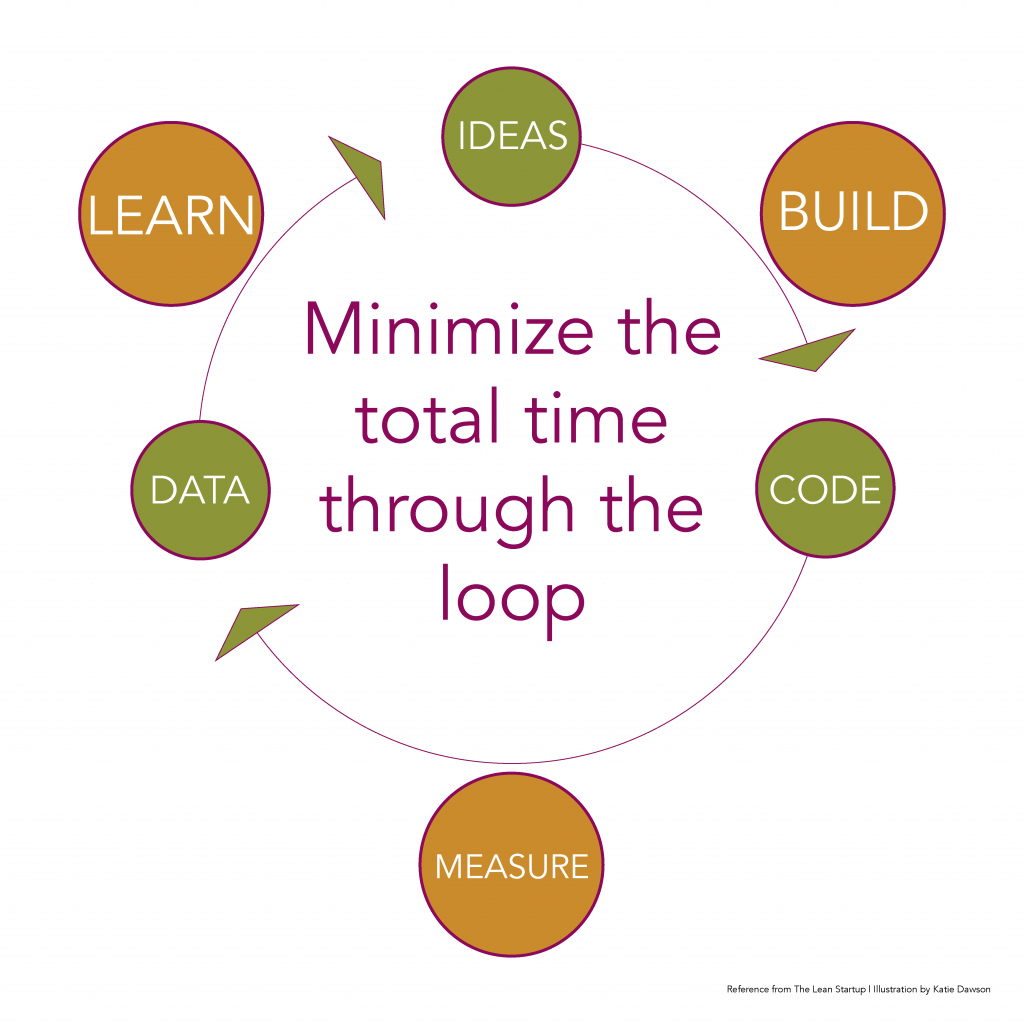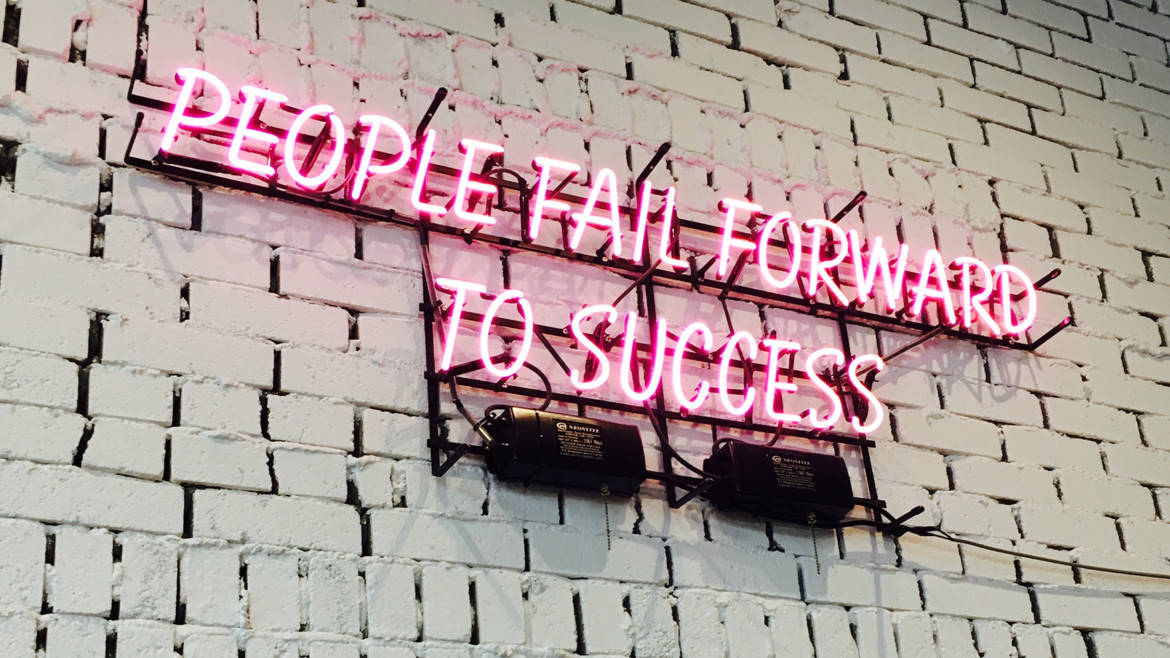Why do we hate to fail? Why is failing a curse word in our society? The idea of failure sends many people to the floor, curling up into a ball and rocking back and forth. Humans are hardwired to avoid failure at all costs, it seems, and yet there is something magical about watching someone overcome failure or loss. A reporter once asked Thomas Edison how it felt to fail one thousand times creating the light bulb and his response was, “I didn’t fail 1,000 times. The light bulb was an invention with 1,000 steps.”
The question remains, though, why do we hate to fail? Is it fear? Are we afraid of looking silly or embarrassing ourselves? I’m reminded of the time I made the decision to try out for my high school cheerleading team (yes, as a guy) and all of my friends chickened out. At the time, I believed they were too embarrassed, but now I think it had far more to do with a fear of failure. What if they went through that process of looking foolish — and I can assure you that I did look very foolish — and didn’t make it? What then? That failure to them was not worth the gain. To be fair, at this stage of life I’m not really sure what the gain was of my being a cheerleader, but that is neither here nor there.
Let’s compare stories, however, and consider the entrepreneur. The classic risk taker. The win at all odds, innovator, who raises themselves up by their bootstraps into financial freedom and market success. Is the entrepreneur afraid of failure? Do they concern themselves with looking foolish? Entrepreneurs must admit the risk of failure and prepare themselves for the worst case. I started a company in 2009 with a successful entrepreneur and by the end of 2011, we both agreed that we had failed in our objectives. We had not failed completely financially and I was blessed to take a good salary. We generated enough income to pay our team for nearly three years, but we had not accomplished nearly what we had set out to do. It was time for us to cut bait and move on. So we did.
The hardest part of leaving that company was admitting defeat and failure. Now I can look back on that exciting time and say we were successful, but the business model failed. Failure is not a product of the individual. People are not failures. People may fail in situations, leaders may fail at leading, managers at managing, sales people at selling, etc. But those individuals are not failures. The window of opportunity and the external environment often play as much, or more of a role in failure than the people and their decisions.
What is most important in the process of failing, however, is what you do next.
Fight or Flight
Failure is not the end, it is the beginning. The beginning of a journey that will diverge. When someone fails, they have essentially three main choices. The first choice is to ignore failure naively and continue along the broken pathway which will lead to inevitable decline. This is called insanity, or as Albert Einstein once said, “The definition of insanity is doing the same thing over and over again and expecting different results.” Don’t do this please, it hurts me, deep down in my heart.
The second choice for someone who is failing is to quit, give up and run away. In essence, this is picking flight over fight. We have this innate fight or flight capacity that we balance daily. When someone points a gun at me, hypothetically speaking of course, I’m going to have to pick one of these choices quickly. Likewise, when that little brown squirrel is staring me down as I race down the highway in my sports car — ahem hybrid sedan — it has to decide: fight or flight. The choice to take flight is not an inherently bad choice. We must all at some point in our lives make this choice. When we are failing in an endeavor whether it be school, marriage or work, we make decisions on which battles to fight.
The third choice, my favorite by the way, is the choice to fight. When failure slaps you in the face like a ninja you can always choose to grit your teeth and fight back. Fighting for what you believe in, fighting to survive, fighting for what you know deep down is right and good, that is what is worth fighting for. If you are failing at something, fighting is a good thing if you know it’s right. Know what you are fighting for. Know that you can lose the battle to win the war.
Do not regret fighting failure, but do not spend your life marching naively off the cliff like a lemming just because you are too stubborn to change your path and admit defeat. Learn to read the signs and be open to accepting failure as a direction toward success.
Failure: A Process of Learning
For many, failing can be a process of learning. Learning is the reason we try things. If all we ever needed to do was already pre-programmed into our brains at birth, we would not need school and or be inclined to take risks. Entrepreneurs would not exist. We would live in a gray dystopia where robots rule…okay well that is a little too far, but you get the point. If failing is learning, then how do we make it a success practice?
Using failure to our advantage in the learning process starts with our perceptions. We have established the importance of understanding and valuing failure as an opportunity to take risk. Now let us consider a model of learning in failure. Eric Ries essentially coined the Lean Startup movement in 2012 with his book, “The Lean Startup.” In his book, Ries lays out a framework called the Build, Measure, Learn Loop that I teach in all of my entrepreneurship courses. The figure below highlights this process.

The loop’s premise is based on the entrepreneurial process of establishing an idea for a business or a feature within a product, then building a minimum viable product (MVP) that demonstrates that idea, getting it in front of users to measure its efficacy and then learning from the data collected in order to strengthen the idea. Then you do it repeatedly. The process is extremely valuable.
Innovation, change, and failure are not limited to the entrepreneur. Let us say, for instance, that I need to address a strategic challenge in my organization and I feel that we are not solving a customer problem. I would ideate a new solution, build a micro version or an MVP, get it in front of my customer quickly and design a test or system of feedback. From this process, I can quickly assess the outcomes of my preliminary assumptions about the problem at hand and my customer’s needs.
As a leader, I’m called to create and grow a culture each and every day that aligns with the vision and mission of an organization. Personally, I value innovation, change, risk-taking and ultimately failure as an important aspect of any team and/or employee. I encourage everyone on my team to take these risks and help others to understand the importance of failure.
Jeremy Vickers, Ph.D., serves as Associate Vice President of External Affairs at Baylor University where he leads institutional events, community relations and external affairs. He is passionate about innovation and entrepreneurship and channels that passion to serve organizations where he can support both growth and change. Jeremy lives in Waco, TX with his wife Jackie and four children.


